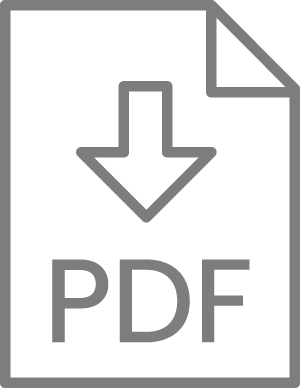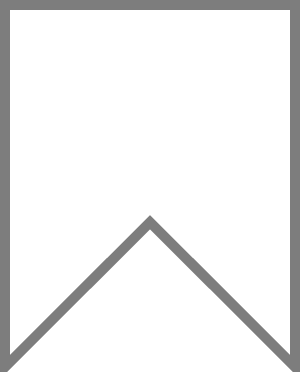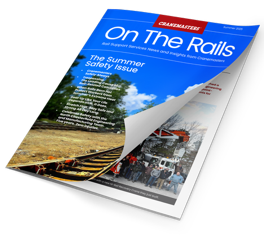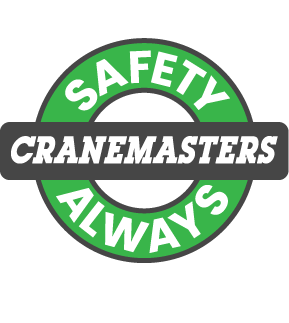
Cranemasters:
Safety Always
- Summer 2025
- Cranemasters
In the railroad industry, safety is of the utmost importance. Workers must receive extensive and ongoing safety training and be fully compliant with FMCSA, OSHA, MSHA, and FRA regulations, as well as hold a valid Railroad Safety Certification. However, at Cranemasters, these requirements are just the beginning.
At their simplest, inspections identify issues that need to be addressed. But they can do much more.
A quality inspection report contains specific information, including a detailed description of every issue found, an assessment of its severity, and any regulatory requirements related to the problems discovered. Cranemasters can also provide a thorough remediation plan with detailed estimates for all needed resources upon request.
This information is necessary for meeting regulatory requirements, but it can also help you make accurate and timely budget decisions and plan and execute capital planning strategies.
For instance, a track inspection can identify defects to determine whether you need an expansion. Then, appropriate upgrades and improvement cycles can be planned to ensure you are in the best shape to avoid disruptions.

David Brygider, MS
Assistant Vice President of Safety and Risk Management
Cranemasters, Inc.
For starters, could you briefly describe your role and key responsibilities at Cranemasters?
Yes. I serve as the Assistant Vice President of Safety and Risk Management at Cranemasters, where I’m responsible for leading the development, implementation, and oversight of the company’s national safety strategy, including all of our Environment, Health, and Safety (EHS) policies, programs, and systems. Ultimately, my mission is to create a safe and healthy work environment for all stakeholders while reducing costs and risks for Cranemasters.
Which safety risks are particularly challenging for Cranemasters, and are they different from those in the industry in general?
Our work at Cranemasters is unique in its risk profile. We specialize in railroad emergency response, railcar recovery, and derailment remediation, often under unpredictable and high-pressure conditions. While we address standard industry risks, such as PPE compliance, line-of-fire exposure, and powered mobile equipment, we also face added complexity due to track protection requirements, confined workspaces, overhead hazards, inclement weather, and proximity to live rail.
Unlike many industrial environments, our teams often respond to dynamic, multi-agency incidents where rapid mobilization, railroad-specific protocols, and public safety coordination intersect.
Each railroad has its own rules and expectations, and we must train and operate accordingly, making our risk management practices broader and more adaptive than most.
Cranemasters Safety Wall
We use what I call our “Safety Firewall” to build and reinforce a culture of shared responsibility. A safety colleague, Leo Grinsteiner, introduced me to the Firewall method, which I modified for Cranemasters.
First, we develop clear, data-informed policies reviewed by our internal Safety Committee. Second, we communicate these expectations through visual tools, including custom safety posters, digital dashboards, and accessible training documents. Finally, and most importantly, we ensure accountability through real-time field observations, direct leadership engagement, and structured job site interactions.
Due to the specialized work we perform and our partnerships with railroads, we are held to a high standard of training. Employees are required to complete Roadway Worker Training (RWT) for each railroad they work under, as all Class 1’s have unique programs. We also adhere to all safety requirements under 49 CFR 243 among many others. We are also OSHA, MSHA, and DOT compliant with our training schedule. Additional required training includes eRailSafe, System Safety, and MSHA Part 46 (24-hour initial and 8-hour refresher), Red Cross, Smith System defensive driving, and HAZWOPER when required. For those operating cranes, we certify through NCCCO or CIC.
We deliver this training through in-house instruction, online modules, and certified third-party providers. Our Salesforce/Rail Life Services platform tracks every certification and alerts supervisors of upcoming renewals, ensuring no employee is out of compliance before entering a job site.
Yes. New hires receive a comprehensive orientation that includes general safety training, job-specific instruction, and all required railroad certifications. This typically involves 24-hour MSHA training, Red Cross First Aid/CPR training, Smith System training, PPE usage, and an introduction to our Safety Firewall framework.
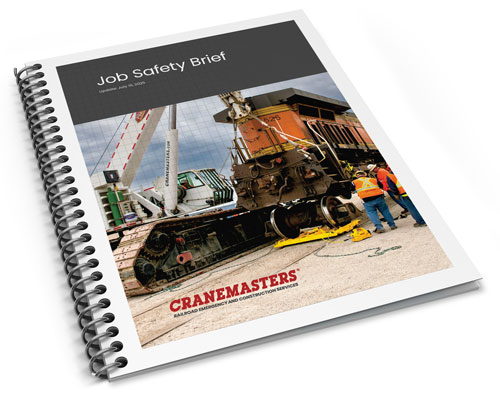
From there, ongoing training is delivered through weekly toolbox talks, Monday safety meetings, and annual refresher courses for each railroad or regulatory body we work with. We also provide targeted, real-time training when new risks emerge or conditions change. For experienced employees, we offer operator certifications and leadership development opportunities to help them mentor newer team members.
We track both leading and lagging indicators to measure success. Leading indicators include the volume and quality of field safety observations, timely completion of Job Safety Briefings (JSBs), and training compliance rates. Lagging indicators include Total Recordable Incident Rate (TRIR), Days Away/Restricted or Transferred (DART), Lost Workday Case Rate (LWCR), and Experience Modification Rate (EMR).
I’m proud to say our TRIR, DART, and LWCR scores are consistently well below NAICS industry averages, and our current EMR is 0.75. At the individual level, we evaluate worker performance based on observed safety behavior, peer feedback, participation in briefings, and engagement in near-miss reporting or improvement suggestions. We present these findings weekly in our Monday Morning Meetings, giving complete visibility to leadership and the field.
Yes, we hold mandatory company-wide safety meetings every Monday morning. These meetings begin with a leadership session from 7:00 to 7:30 AM and continue with employee breakout sessions from 7:30 to approximately 8:00 or 8:30 AM. During these meetings, we review observation trends, injury-free milestones, and any recent incidents or near misses. We also cover a weekly safety training topic, often tailored to railroad-specific risks or seasonal hazards.
These sessions serve as a pulse check for the entire organization. They are essential to maintaining effective communication between divisions, reinforcing our policies, and ensuring alignment on what matters most, ultimately protecting our people.
Yes, we hold mandatory company-wide safety meetings every Monday morning. These meetings begin with a leadership session from 7:00 to 7:30 AM and continue with employee breakout sessions from 7:30 to approximately 8:00 or 8:30 AM. During these meetings, we review observation trends, injury-free milestones, and any recent incidents or near misses. We also cover a weekly safety training topic, often tailored to railroad-specific risks or seasonal hazards.
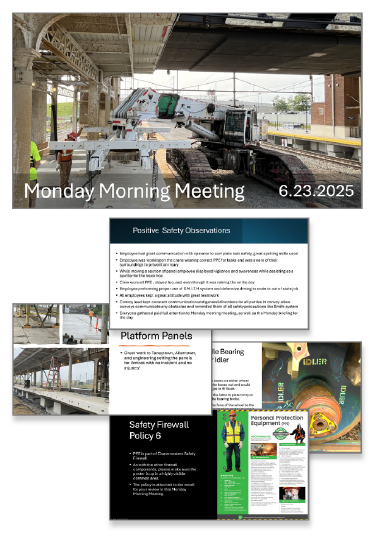
These sessions serve as a pulse check for the entire organization. They are essential to maintaining effective communication between divisions, reinforcing our policies, and ensuring alignment on what matters most, ultimately protecting our people.
Yes, and I would argue those differences are precisely why we’ve been so successful. We don’t approach safety as a compliance exercise. We treat it as a core operational strategy. We go beyond what’s required by providing premium PPE, investing in continuous digital safety systems, and embedding ownership-level engagement across the business.
Our “Safety Always” philosophy replaces the more passive mindset of “Safety First.” At Cranemasters, we make safety part of every task, every job plan, and every conversation. We respond to incidents with company-wide alerts, not just corrective actions. And we celebrate success through milestone events, company-branded gear, and formal recognition. All these steps keep morale high and standards even higher. We’re not just compliant; we’re committed.
Our success hasn’t happened by chance. The safety performance we’ve achieved, including multiple divisions with many years of injury-free operations, is the result of deliberate systems, leadership’s daily involvement, and employee buy-in.
Safety is everyone’s job at Cranemasters. From ownership to new hires, everyone plays a role in protecting each other. We’ve built a culture that values speaking up, stopping work when necessary, and learning from every mistake and success alike. That’s what sets us apart. Safety isn’t just something we manage. It’s something we live.

Safety is the highest form of respect we can offer to one another.
About David Brygider
As Assistant Vice President of Safety and Risk Management, David Brygider oversees Cranemasters’ national safety strategy and all EHS policies, programs, and systems. With over 10 years of professional experience in the industry, his educational background includes a Master of Science in Environmental Health and Safety Management from Rochester Institute of Technology, where he graduated with a 4.0 GPA, and a Bachelor’s degree in Homeland Security and Emergency Preparedness from Virginia Commonwealth University. He holds a Lean Six Sigma Green Belt from Duke University’s Continuing Education Program. He also has over 17 licenses and certifications related to occupational safety, risk control, workplace safety, and loss prevention.




